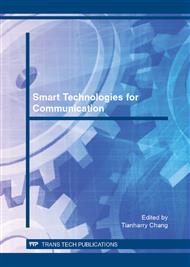p.217
p.222
p.227
p.232
p.238
p.243
p.249
p.255
p.259
Targets Detection in Sea Clutter Based on Echo State Network
Abstract:
A novel method to predict the sea clutter time series and detect target embedded in sea clutter is presented. The method is actually a recurrent neural network called an echo state network (ESN). A recursive least squares (RLS) algorithm is used for updating the output weights of ESN. A set of time series from IPIX radar data is tested. Numerical experiments reveal that the proposed network shows higher prediction precision in pure sea clutter data. Moreover, the mean squared error (MSE) between real-life data and prediction value by ESN can be used to detect target effectively.
Info:
Periodical:
Pages:
255-258
Citation:
Online since:
June 2012
Authors:
Keywords:
Permissions:
Share:
Citation:


